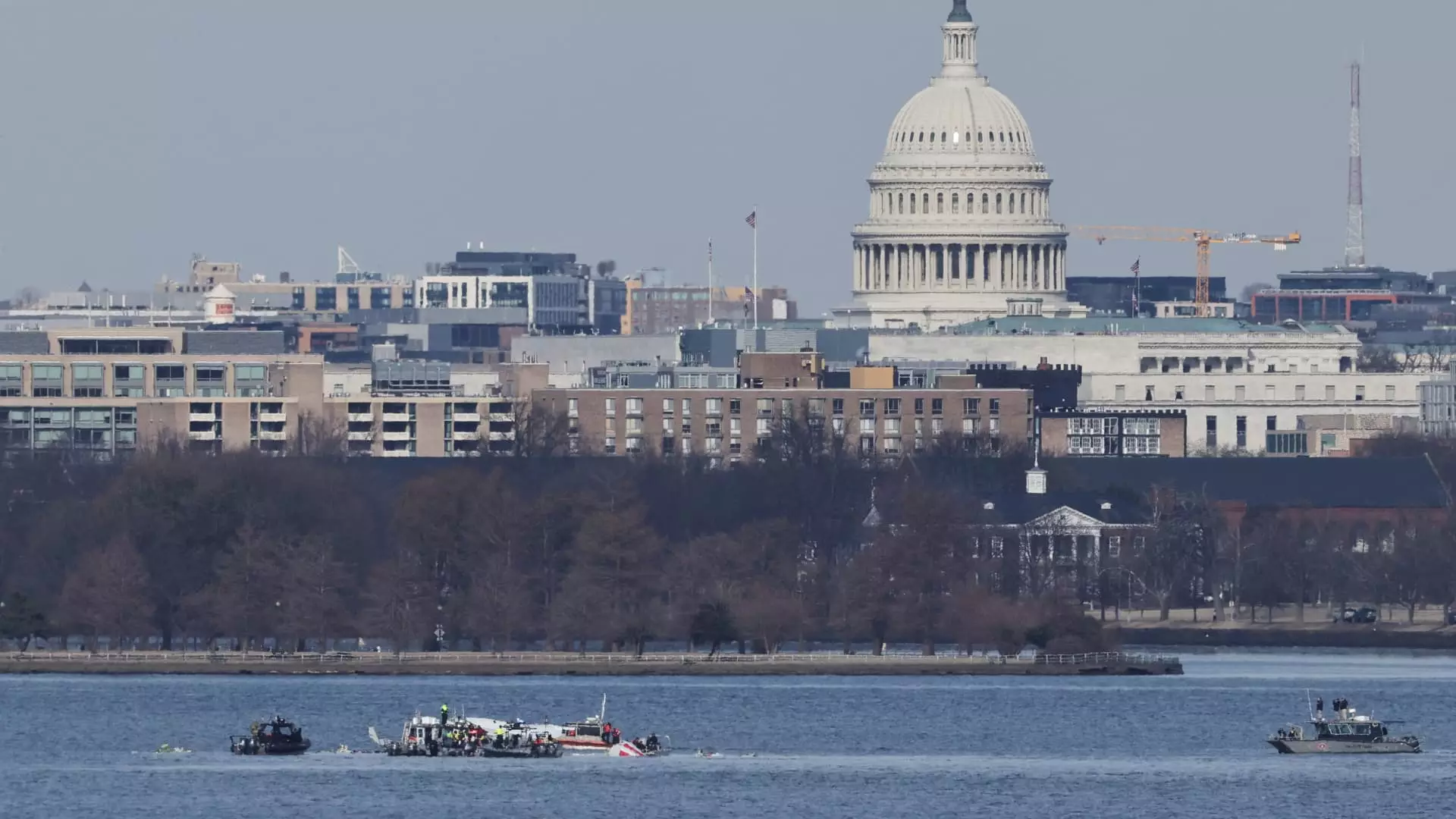The recent collision between an Army Black Hawk helicopter and an American Airlines jetliner over the Potomac River has left the nation in shock, revealing serious concerns regarding air traffic safety, operational protocols, and the chaotic airspace surrounding Washington, D.C. As the investigation unfolds and authorities work tirelessly recovering and examining evidence from the crash site, it is crucial to take a closer look at the circumstances leading to this catastrophe, as well as the implications it carries for aviation safety in the United States.
On a fateful Wednesday night, a monumental disaster claimed the lives of all 67 individuals on board—64 passengers and crew members from American Airlines Flight 5342, alongside three military personnel in the helicopter. This tragic event stands as the deadliest aviation accident in the U.S. in over 20 years. The initial reports suggest that the PSA Airlines Bombardier CRJ-700 was on its final approach to Reagan National Airport when it struck the Black Hawk helicopter, which had reportedly been conducting a routine training operation. The enormity of this incident cannot be overstated; not only did it result in a significant loss of life, but it also has raised critical questions about the safety protocols that govern aerial navigations in heavily trafficked regions, particularly near federal facilities.
Authorities, including the National Transportation Safety Board (NTSB) and the Federal Aviation Administration (FAA), are currently conducting a comprehensive investigation into the circumstances surrounding the crash. Investigators are combing through flight data and cockpit voice recordings from both aircraft to glean insight into their final minutes in the air. In particular, the FAA’s standard protocols permit helicopters to operate at a maximum altitude of 200 feet near busy airports. Defense Secretary Pete Hegseth confirmed that the Black Hawk was engaged in routine proficiency training, potentially raising the question of whether it was operating within the stipulated guidelines at the time of the accident.
Furthermore, an alarming aspect of this tragedy highlights potential breaches in air traffic control protocols. Reports indicate that the Reagan National Airport tower had reduced staffing on the night of the collision, possibly compromising its ability to effectively coordinate aircraft movements. Specifically, having helicopter and airplane traffic overseen by a singular controller can create potential risks, especially in areas known for heavy air traffic. Early analysis suggests that the elevation and transition of the Black Hawk may have played critical roles, but it remains too early to assign blame definitively.
The airspace around Washington, D.C., is among the most complex in the nation, shaped by regulations meant to protect sensitive governmental facilities and dense urban environments. Helicopter traffic patterns are uniquely designed, with defined tracks allowing for the safe navigation of numerous military and civilian aircraft. However, the operational realities within this framework can become convoluted, where a mixture of mission-critical flights and commercial airlines must navigate a limited vertical and horizontal space while following varying protocols. Such complexity raises concerns over the potential for miscommunication among air traffic controllers, pilots, and other involved personnel.
While the investigation continues, transportation officials have announced temporary restrictions on helicopter traffic near Reagan National Airport, with exceptions reserved for emergency medical evacuations and law enforcement exercises. This underscores the critical need for reevaluation of airspace protocols to better accommodate the ever-increasing volume of air traffic, particularly in such sensitive areas.
This tragedy marks a stark reminder of the inherent risks present in air travel, particularly in the context of a decade-long period of relative safety. The absence of a fatal commercial aviation accident since 2009 had cultivated a prevailing belief in the efficacy of evolving safety regulations and pilot training standards. However, this recent crash compels industry stakeholders to reexamine not only the systems in place for training military pilots but also the communication dynamics between civilian air traffic control and military operations.
As inquiries proceed and preliminary data surfaces, aviation safety regulators must take a proactive stance to prevent similar occurrences. Shortages of certified air traffic controllers and a historical pattern of increased near-miss reports have indicated a need for reform. The industry must also strive for more effective collaborative communication among various operational entities to ensure that airspace hazards are mitigated expeditiously and the integrity of air travel remains intact.
The collision between the Black Hawk helicopter and the American Airlines flight serves as a wake-up call. It poses critical questions about aviation safety, operational integrity, and regulatory adherence. The rush to assign culpability should be tempered by a thorough investigation that ensures every layer of the aviation framework is critically analyzed and enhanced for the future.


Leave a Reply